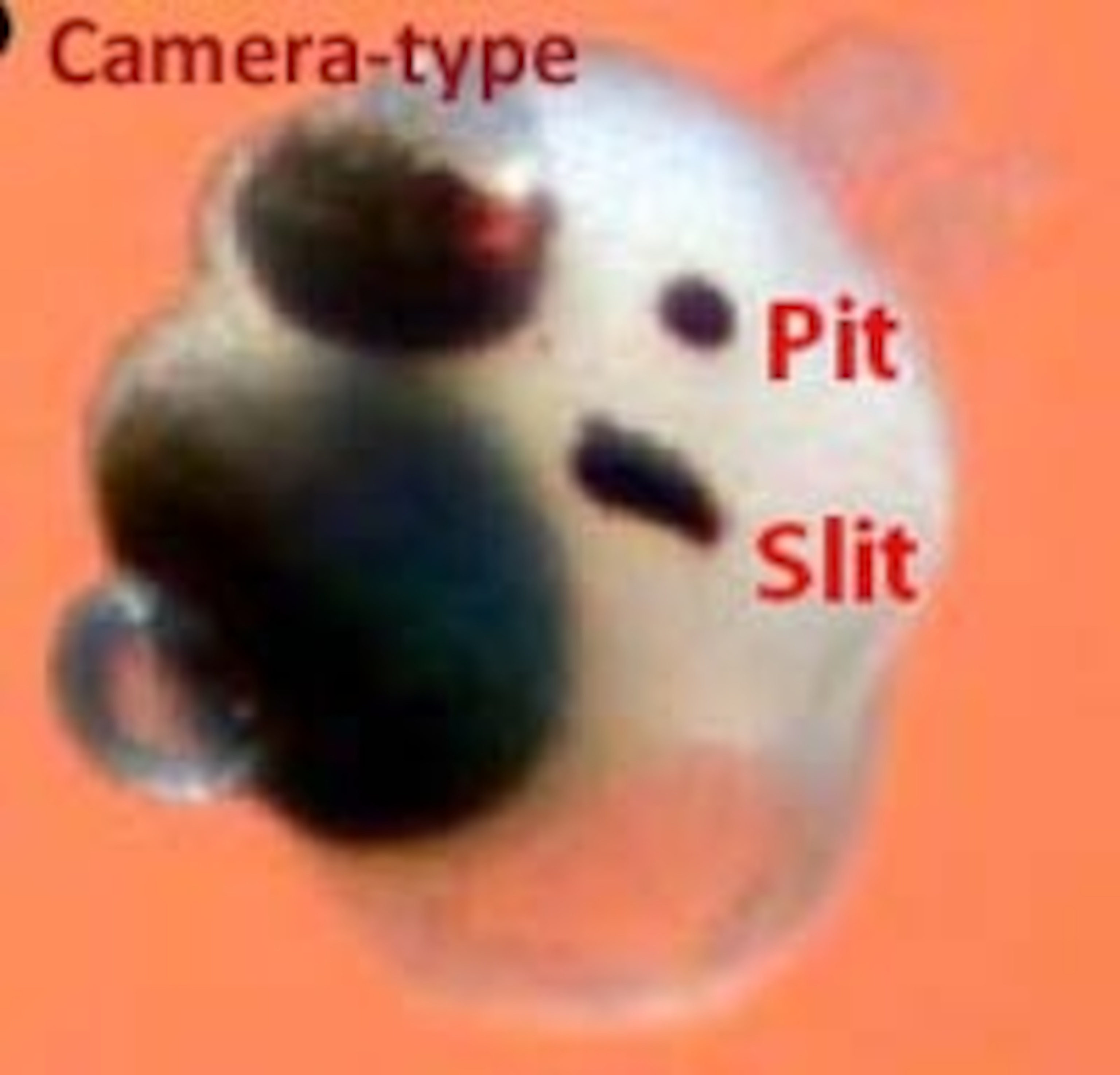Jellyfish and human eyes assembled using similar genetic building blocks
Jellyfish may seem like simple blobs of goo, but some are surprisingly sophisticated. The box jellyfish (Tripedelia cystophora), for example, is a fast and active hunter and stalks its prey with the aid of 24 fully functioning eyes. These are grouped into four clusters called rhopalia, which lie on each side of its cube-like body. Together, they give the box jellyfish a complete 360 degree view of its world and make it highly manoeuvrable.

Each eye cluster, four eyes are merely pits containing light-sensitive pigments, but two are remarkably advanced and carry their own lenses, retinas and corneas. The lenses are good enough to produce images that are free of distortion and even though the views are blurrier than those we see, these complex ‘camera-type’ eyes are very similar to those of more advanced animals like ourselves and other vertebrates.
But these similarities extend to a more fundamental level. Even though jellyfish are the most ancient group of animals to have a well developed visual system, it turns out that their eyes are built with many of the same genetic building blocks that ours are.
The eyes have it
All animal eyes, from the familiar human version to the compound eye of insects, contain two basic components. They have a photoreceptor – a cell that converts streams of light into chemical signals – and a dark pigment that focuses said streams. The photoreceptors always work through a partnership between a protein called an opsin and a chemical called retinal. When light strikes retinal, the molecule’s shape changes and it separates from opsin. That triggers a chemical signal that ends in an electrical impulse travelling to the brain.
Vertebrates and invertebrates differ in both the pigments and the photoreceptors they use, and both groups have their own distinctive opsins and signalling cascades. Zbynek Kozmik from the Academy of Sciences of the Czech Republic found that the box jellyfish is unusual in the structure of its photoreceptors are closer to those of the back-boned vertebrates than the spineless invertebrates.

When Kozmik looked for box jellyfish genes that are involved in sight, he found that their opsin protein is also similar to the versions found in vertebrate eyes. With further tests, Kozmik confirmed that the jellyfish’s opsin is a fully functioning visual protein. It sticks to retinal and is particularly sensitive to blue-green light.
The similarities didn’t stop there. Kozmik found that the chain of proteins that carry the message passed on by opsin, are again similar to those used by vertebrates. And just as our eyes use the dark pigment melanin, so do those of the box jellyfish. Amid its genome, Kozmik found the jellyfish versions of human gene called Oca2 and Mitf that are essential for creating melanin. The genes are switched on in a part of the jellyfish eye that’s littered with granules of pigment, which were identified as melanin through chemical tests.
Parallel or conserved?
Despite the massive evolutionary gulf that separates jellyfish and vertebrates, both groups construct their eyes using similar genetic components. It’s possible that they kept an ancient ‘eye program’ that their shared ancestor already had, but Kozmik thinks that this is unlikely. If any such program existed, it would have eventually been abandoned by many animal groups, for most sighted invertebrates, such as octopuses and insects, build their eyes with a very different set of genes. Kozmik argues that eyes provide such an important advantage that there’s no obvious reason why any group of animal should abandon one working system of building them, in favour of a completely different one.
Instead, it’s more likely that jellyfish and vertebrates evolved their eyes by independently recruiting the same genetic building blocks, in a case of parallel evolution. That’s not unfeasible – there are other examples of large networks of genes being co-opted for new purposes, and computer models have estimated that it would only take about half a million generations to evolve a sophisticated camera-type eye from a simple patch of light-sensitive cells.
In fact, it’s likely that the jellyfish’s advanced camera-type eye evolved from the primitive cup-like versions that sit next to them on the rhophalia. These simpler eyes contain proteins called crystallins, which help to build the lenses of the advanced ones. And mitf gene which helps to produce melanin in the camera-type eyes is also active in the cup-like ones.
The eyes of the box jellyfish tell us yet again that important innovations, such as eyes, evolve by changing how existing groups of genes are used, rather than adding new ones to the mix.
Reference: PNAS doi:10.1073.pnas.0800388105
Images: jellyfish by Anders Garm; eye from PNAS